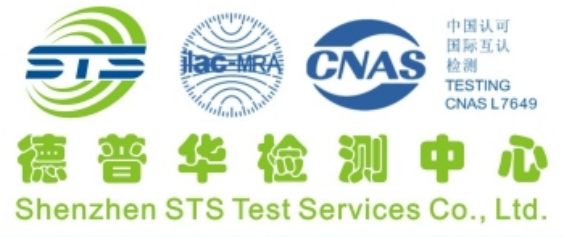Information on restricted substance testing regulations, main content: The European Chemicals Agency proposes restrictions on medium chain chlorinated paraffins (MCCPs); The two newly added restriction requirements in Appendix XVII of the EU Reach Testing Regulation will officially come into effect; Two states in the United States have introduced PFAS control requirements for consumer goods; Canada revises multiple regulations related to surface coating materials under CCPSA; The Chinese Health Commission has released new standards for food contact paper products and bamboo and wood products.

1. The European Chemicals Agency proposes restrictions on medium chain chlorinated paraffins (MCCPs)
On July 15, 2022, the European Chemicals Agency (ECHA) proposed to add medium chain chlorinated paraffins (MCCPs) and other substances containing chlorinated alkanes with carbon chain lengths ranging from C14 to C17 to the list of restricted substances in Appendix XVII of the EU REACH Regulation (EC) No 1907/2006, in order to restrict the manufacture, use, and market release of substances, mixtures, and articles containing such substances. The proposal is still in its early stages and needs to be evaluated by ECHA's Risk Assessment Committee (RAC), Socio Economic Analysis Committee (SEAC), and the European Commission. After the evaluation is approved, the restriction requirement will be introduced in the form of Annex XVII restriction requirements of REACH regulation.
2. Two new restriction requirements in Appendix XVII of the EU REACH regulation will officially come into effect
On August 10, 2022, the requirement to restrict the use of polycyclic aromatic hydrocarbons (PAHs) in particles or coverings used as fillers in artificial turf fields, playgrounds, or sports applications, which was added in July 2021, as well as the requirement to restrict lead in wet shooting bullets, which was added in January 2021, in Annex XVII, Item 50 of the REACH regulation, will officially come into effect.
3. Two states in the United States have introduced PFAS control requirements for consumer goods
Recently, two states in the United States have passed control laws for perfluoroalkyl and polyfluoroalkyl compounds (PFAS) in consumer goods. On June 3, 2022, Colorado Governor Jared Polis signed the HB22-1345 bill, which requires the establishment of a regulatory plan to prohibit the production or sale of certain products intentionally containing PFAS substances, including floor mats, fabric treatment agents, food packaging, infant and toddler products, oil and gas products, kitchenware, cosmetics, indoor and outdoor fabric decorations, and indoor and outdoor upholstered furniture. At the same time, the plan also requires manufacturers to report and indicate cookware containing intentionally added PFAS chemicals. On June 7, 2022, Hawaii Governor David Iger approved the HB 1644 Act. The main content of this plan is to prohibit the production, sale or distribution of packaging and liners, plates, food boats and pizza boxes containing PFAS, as well as the production, sale, distribution and use of Class B fire foam containing PFAS (except for certain exemptions). In recent years, as the harmfulness of more and more PFAS substances has been confirmed, the global control heat for such substances continues to rise. Several states in the United States are currently formulating or have already introduced control requirements for PFAS in consumer products, and companies related to exporting products to the United States must pay sufficient attention.
4. Canada revises multiple regulations related to surface coating materials under CCPSA
On June 22, 2022, Canada published the "Provisions for Revising Certain (Surface Coating Materials) Regulations under the Canadian Consumer Product Safety Act (CCPSA)" (SOR/2022-122) in its official bulletin (Canada Gazette), revising the requirements of five relevant regulations under CCPSA regarding surface coating materials, namely the "Toy Regulations" (SOR/2011-17), "Cribs, Crabs, and Swindles Regulations" (SOR/2016-152), "Baby Guardrails Regulations" (SOR/2016-179), "Baby Fences Regulations" (SOR/2018-186), and "Surface Coating Materials Regulations" (SOR/2016-193). This regulation will come into effect on the 180th day after its publication in the Canadian Gazette, which is December 19, 2022, during which the original regulatory requirements will remain in effect. The main contents of this revision are as follows:
(1) Expand the meaning of surface coating materials to include surface coating materials that do not dry out during application, such as powder coatings for electrostatic spraying;
(2) Expand the scope of other decorative coating materials that may be applied to products during the manufacturing process, including stickers or films;
(3) Expand the scope of application of the total lead content limit of 90mg/kg from children's furniture to surface coatings of furniture;
(4) The restrictions on lead, mercury, and certain harmful elements in coating materials apply to touchable parts on the product;
(5) Delete outdated testing methods applied to certain harmful elements in coating materials;
(6) Require testing to be conducted using methods that comply with good laboratory practices.
5. The Chinese Health Commission has released new standards for food contact paper products and bamboo and wood products
On July 28th, the Chinese Health Commission released three new standards related to food contact materials, namely
The GB4806.8-2022 National Food Safety Standard for Food Contact Paper and Paperboard Materials and Products will be officially implemented on June 30, 2023.
The GB4806.12-2022 National Food Safety Standard for Bamboo and Wood Materials and Products in Contact with Food will be officially implemented on December 30, 2022.
The GB31604.53-2022 National Food Safety Standard for Food Contact Materials and Products - Determination of Migration of 5-Ethylene-2-Norbornene will be officially implemented on December 30, 2022.
Among them, GB 4806.8-2022 and GB 4806.12-2022 are material standards, and GB 31604.53-2022 is the testing method.